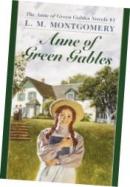
L.M. Montgomery published twenty novels in her lifetime. Eight are Anne novels, two deal with the King children and relatives or friends, three are Emily books, two are Pat books, and the rest are individual stories which she may or may not have intended to extend into sequels. Seventeen are set wholly on Prince Edward Island; one is set in PEI and Nova Scotia (Anne of the Island); one is set half on PEI and half in Toronto (Jane of Lantern Hill); one is set in the picturesque lake-and-cottage country of Ontario called Muskoka that charmed her so in 1922 (The Blue Castle). At her death she was working on another Anne book, which was much altered and published by her son as a collection of short stories called The Road to Yesterday (1974). She produced some one million words in her private journals, between 1889 and 1942, and requested in her will that these journals be preserved and published. Four (of a total of five) volumes of The Selected Journals of L.M. Montgomery, co-edited by Drs. Mary Rubio and Elizabeth Waterston, had been published when this exhibition was launched in 2002 (1985, 1987, 1992, 1998). Three collections of her letters to George Boyd MacMillan of Scotland and to Ephraim Weber of Alberta have appeared since her death.
Montgomery also published a collection of short stories called Chronicles of Avonlea (1912). A second collection, called Further Chronicles of Avonlea, was published without her consent in 1920 and became the subject of an international lawsuit against her original publishers, the L.C. Page Company of Boston. (See Further Chronicles book cover).
Montgomery published only one volume of collected poems, The Watchman and Other Poems, in 1916. She also produced three of the miniature biographies in a volume called Courageous Women (1934).
During her career, Montgomery published one long autobiographical essay for Everywoman’s World in 1917 entitled “The Alpine Path,” which was not separately published until 1975.
All through her career, Montgomery was publishing essays–many now uncollected. The clipping scrapbooks suggest she published in periodicals of her day some five hundred short stories and five hundred poems. Some of these stories and poems have been republished in recent years.
The books and related materials used to illustrate this section of the exhibition are drawn from the Ronald I. Cohen Lucy Maud Montgomery Collection of the National Library of Canada.

L.M. Montgomery grew up in Prince Edward Island, a real place of
“politics and potatoes.” But it’s her fictional island, a richly textured
imaginative landscape, that has captivated a world of readers since
1908, when Anne of Green Gables became the first of Montgomery’s
long string of bestsellers.
In this wide ranging and highly readable book, Elizabeth Waterston
uses the term “magic” to suggest that peculiar, indefinable
combination of attributes that unpredictably results in creative
genius. Montgomery’s intelligence, her drive, and her sense of
humour are essential components of this success. Waterston also
features what Montgomery called her “dream life,” a “strange inner
life of fancy which had always existed side by side with my outer
life.” This special ability to look beyond the veil, to access vibrant
inner vistas, produced deceptively layered fictions out of a life that
saw not just its share of both fame and ill fortune, but also what
Waterston calls “dark passions.”
Designed to be read alongside the new biography of Montgomery
by Mary Rubio, this is the first book to reinterpret Montgomery’s
writing in light of important new information about her life. Each
novel is discussed in terms of Montgomery’s private life, her back-
ground reading and interests, and of course also as a creative work
on its own.


L.M. MONTGOMERY, WRITER OF THE universally beloved Anne of Green Gables, was born on the north shore of Prince Edward Island and raised in Cavendish where she lived until she married at age 36.
Anne of Green Gables has been translated into 15 different languages and put on film.
The story was inspired by the land, the sea and the people around her. It in turn has imparted an image of the Island that draws 350,000 visitors annually from around the world to Green Gables House.
The Anne of Green Gables Licensing Authority protects the integrity of the images of Anne, preserves and enhances the legacy of L.M. Montgomery and her literary works, and controls the use of Anne of Green Gables and related trademarks and official marks.

